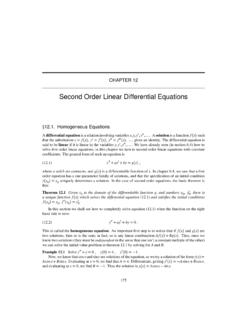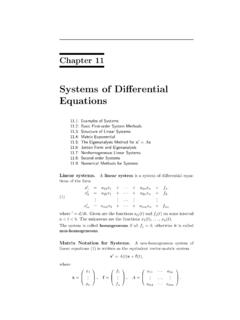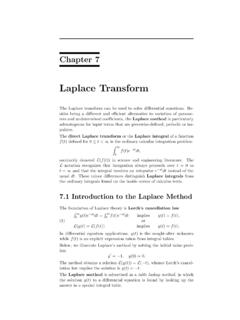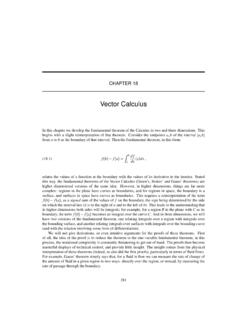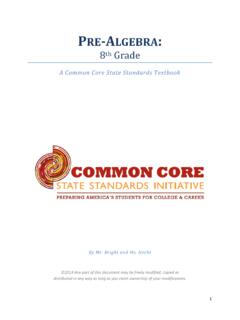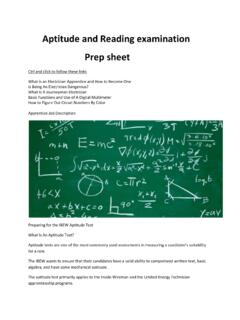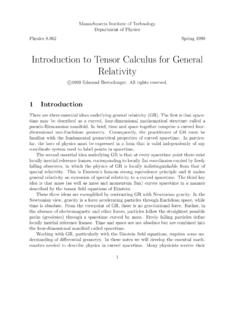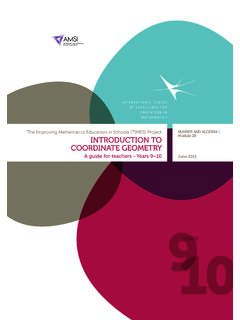Transcription of An Introduction to GeoGebra - Math
1 An Introduction To GeoGebraAn Introduction to GeoGebra Steve PhelpsGeoGebra Institute of OhioMadeira High SchoolUniversity of Introduction To GeoGebraTable of Contents1. How to Get Started with GeoGebra ..32. GeoGebra (August 2011)..43. Introduction to the Getting to Know The Graphics Changing How Things Look: GeoGebra s Object Properties ..116. algebra 1 and algebra 2 Geometry Exploring Conditional Hide and Creating Custom Pre-Calculus and Calculus Creating Dynamic Customizing the Useful Links and Information: Your GeoGebra to-do Introduction To to Get Started with GeoGebra If you have not downloaded GeoGebra , open your browser and go to the GeoGebra Website I rarely have any problems using the WEBSTART on the networked computers at my school, nor in individual workshops with participants.
2 However, if you are having trouble, let me know, and I will supply on off-line installer for you to Introduction To (August 2011)Getting to Know 's begin by getting Beta webstarted on your laptop. This is a fully functioning version of GeoGebra , scheduled to become the official webstart version in late August (you will then follow the procedure in Section 1 to get started). Since it is late in the Beta testing processes, you will be working with (close) to the finished product. However, a word to the wise:Please note that this version has many unfinished features and that all features are subject to change.
3 GeoGebra files that you create today may not work in future versions. Begin by opening a web browser and going to . This forum is where you go to get technical support or customer service. You should spend some time reading through the Forum threads. Scroll down towards the bottom of this page to the English: GeoGebra Beta Forum. Click on the Forum Introduction To GeoGebraYou want to click on the Thread Link shown on the webstart link shown below. This will install only thing you are asked to do is to report any bugs on the forum. Remember! After August 21, you will follow the procedure in Section 1 to get started by going to the GeoGebra Website , clicking on the Download button, then clicking on the Webstart button on the next Introduction To to the InterfaceThe dynamic mathematics software GeoGebra provides six different views of mathematical objects as shown in the figure at right.
4 Three of these views the Graphics View 2, The Computer algebra View, and the Construction Protocol are new to In a nutshell, there is a lot of things you can do with for us, we will primarily use three of these views: a Graphics view, a, numeric algebra view and a Spreadsheet view. These three views allow you to display mathematical objects in three different representations: graphically ( , points, function graphs), algebraically ( , coordinates of points, equations), and numerically in spreadsheet cells. Thereby, all representations of the same object are linked dynamically and adapt automatically to changes made to any of the representations, no matter how they were initially Introduction To to Know The Graphics ViewJust DRAW!
5 The purpose of this first activity is to practice using the Tool Bar and to get comfortable working with objects in the Graphics begin with, hide the algebra View. There are three ways you can do this: You can go to the View Menu algebra ,or Ctrl + Shift + Aor You can click on the small icon in the upper right corner of the algebra View , show the Coordinate Grid . There are two ways you can do this: You can go to the View Menu Grid,or Now that the algebra View is closed, you can click on the small grid icon in the upper left ! Draw a picture with GeoGebraUse the mouse and various tools from the Tool Bar to draw figures on the drawing pad ( square, rectangle, house, tree.)
6 To access the tools, you must click on the small triangle to open the tools, then select the tool you want to t forget to read the toolbar help if you don t know how to use a tool. 7An Introduction To GeoGebraThings to Try changing the colors and sizes of different objects. Click on an object, then explore these mini-tools. Practice creating a point that lies on and object. Practice using the measuring tools tools Correct mistakes step-by-step using the Undo and Redo buttons located in the upper right corner of the window. Select any object and right-click (MacOS: Ctrl-click). Explore the menu that pops Introduction To How Things Look: GeoGebra s Object Properties Every object that you create in GeoGebra has its own PROPERTIES or attributes (color, thickness, labels, algebraic representation) that can be changed in the PROPERTIES DIALOG window.
7 How to access the Object PropertiesYou have already seen one way to change the object properties. Clicking on the small button in the upper right corner of the Graphics View will display an Object Properties Bar where you can change how selected objects in the Graphics View Introduction To GeoGebraHowever there are four other ways that you can access a more detailed Object Properties. (MacOS: Ctrl-click) an object in either the algebra View or Graphics View and select Object Properties Object from the Edit Menu Ctrl+E on an object in the Graphics View and click on the Object Properties do the Tabs do?
8 Look at Steve's Circle in the image on the previous page. Under the Basic Tab, I have selected the Circle with the name a and the caption Steve's Circle. Notice the circle command in the definition the Color Tab, these are the available colors for any objects created in GeoGebra . Notice the history of colors used in this Introduction To GeoGebraUnder the Style Tab, notice how the Filling is set to 25%? You should explore the Line Style pull-down menu and the Filling Menu, as well as the Inverse Filling check box. It's will not hurt anything!Under the algebra Tab, the equation form can be are the tabs that you will use most often.
9 We will explore the Advanced Tab, time permitting. Anyone who would like to explore the Scripting Tab, I can help you to Select different objects from the list on the left hand side and explore the available properties tabs for different types of objects. Select several objects in order to change a certain property for all of them at the same time. Hold the Ctrl-key (MacOS: Ctrl-click) pressed and select all desired objects. Select all objects of one type by clicking on the corresponding heading. Show the value of different objects and try out different label styles. Change the properties of certain objects ( color, style.)
10 11An Introduction To Useful ShortcutsThere are a handful of things you will do over and over in GeoGebra . Theses things are so common, that there are keyboard shortcuts to make doing this things easier. Here is a short list of useful shortcuts. To Move the Graphics View, hold down the shift key, then click and hold and drag your mouse. To Zoom in or out, you can scroll the scroll wheel on your mouse. This is ctrl +/ on a laptop. You can also right-click, hold, and drag a selection box in the graphics view. You will zoom in onto this box. To Undo something you have done, you can press the key combination Ctrl-z.

